What does compression sound like?
What are compressors actually doing to our audio?
Subtle amounts of compression can be difficult to hear, while overt amounts can vary greatly in character by compressor model. So what exactly is compression doing?
In order to compare by ear, i have made audio examples of many different compressor plugins, rendered to match the same loudness as the original raw clip. I selected a specific hip hop drum loop for these tests (“AerosolWriter_86_Drums02” by ModeAudio) which i think quite well shows off the nuances between the different compressor models.
The Compression Tests
Each compressor has audio examples made for 3 different versions, which showcase the full range of each compressor, including the softest gentle caress, the most insane brutal crushing, and a respectable midway point between.
“Soft”
-slowest attack and release settings (auto-release enabled if available)
-soft knee at maximum available depth
-ratio of 1:2 (or minimum, if larger)
-feedback topology if available
-dialed in for ~3dB compression, 100% wet
“Moderate”
-medium attack and release settings
-medium soft knee if available
-ratio in middle of range
-dialed in for ~12dB compression @ 50% wet (or ~6dB if no dry/wet available)
“Extreme”
-fastest attack and release settings
-minimum possible knee
-feedforward, max lookahead
-maximum available ratio, 100% wet
-include any optional saturation, clipping, etc.
-minimum available threshold (redialed to match LU target, in some cases dialed back due to excessive peaking)
Listening to “moderate” examples gets a good overall feel for each compressor’s personality. The “extreme” versions are useful to assess how they handle being pushed overly hard, whether they lean towards distortion or pumping, and highlight flaws and limitations. Comparing between “soft” and the other versions of a model can be useful to discern how each reacts differently as they are pushed to differing degrees.
The Source Clip
https://www.soundsnap.com/aerosolwriter_86_drums02
The Examples
can be perused by downloading…
Purely for educational sake, grab this free ableton pack, open it up, and use it to listen to the compression test examples.
Workflow: trigger the raw clip, trigger a chosen test clip, and use the crossfader to audition back and forth between them. As you trigger different test clips on channel B, the original raw clip will continue to loop in channel A, so you can flip back to it with the crossfader at any moment (literal “A/B”ing). You can also check out the clip waveforms directly as well as the peak levels. All clips were calibrated to be as close to the source’s loudness as possible (-18.2LUFS) without peaking more than 6dB.
~`~
The Visual Graphs
We have 2 kinds of images to show you. The first are created by the HOFA IQ Analyzer and compare the difference between the unprocessed and “moderate” processed files. They display the average of what is being done to the audio across the frequency range and should give an insight into the basic personalities of the different compressors.
The green line represents energy contour of the center channel.
The blue line represents energy contour of the sides channel.
The second type of images are formed by CompScope, which runs test impulses through a compressor to show how it reacts. It reveals the waveshape as well as fast and slow response at three frequencies. This can give a visual impression of how a compressor reacts to different intensities and frequencies. These were all run through at my “default starting position for all compressors” which is an attack of 10ms, release of 300ms, ratio of 4:1 and threshold set to -6dB (or as close as possible when ranges out of bounds). The test signal goes above 0dB so peak light indication is normal. When peaks are shown at less than 0dB, that probably means that that particular compressor comes installed with an output limiter. Note: some compressors would not scan properly with compscope
Higher-res copies of these same images are included in the ableton pack folder for your convenience.
~`~
Which compressor is best? Which is worse? While there are definitely some stand-out entries when imagining specific use-cases, all of these can be used to process audio for a beneficial result, no doubt. So it’s much more up to how you use them than about which specific compressor is “better than that other one”. I give a quick personal impression of each compressor, plus a random application recommendation under each set of images (which of course are entirely subjective and you are free to disagree with to any degree).
~`~
BEFORE & AFTER ANALYSIS GRAPHS

IQ ANALYZER – RAW SOURCE – NO PROCESSING

COMPSCOPE – BLANK – NO PROCESSING
~`~

ABLETON COMPRESSOR

ABLETON COMPRESSOR
Ableton’s stock compressor is a versatile “swiss army” tool with lots of options to fine-tune how it reacts. I found it to perform better than average at light to moderate intensity, with an FET-like feel. When pushed to extremes it can become quite distorted.
Recommended for: Tight, technical surgery. Wear gloves.

ATK Compressor

ATK COMPRESSOR
ATK’s compressor feels like it rounds off the front end of transients with a generally aggressive FET vibe.
Recommended for: Adding weight to something thin & brittle.

BOEING 747

BOEING 747
“Digital in a good way”, the 747 has a sine-esque frequency response with a hefty low end. Solid punch and stays clean even if pushed hard.
Recommended for: When you want to add digital mojo to a stale analog part.

BUS DRIVER

BUS DRIVER
Bus Driver adds sizzly tube splat and an incisive edge to transients. Cauterizes tracks together like vegetables in a grill, harmoniously blending them (Thank you, Bernie). Add too much smoke, however, and it may overwhelm the palate.
Recommended for: Light seasoning to a group of tracks comprised of both percussive and melodic elements.
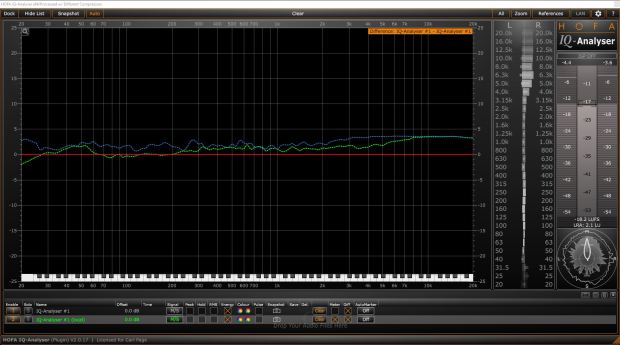 BX_OPTO
BX_OPTO

BX_OPTO PEDAL

BX_OPTO

BX_OPTO PEDAL
Bx_Opto & Bx_Opto Pedal are both based on the same engine. Punchy optical compression. It’s so punchy. It has nice punch to it. I like to think of it as menacing. It’s red. It’s not shy. It punches you in the face. Now your nose is red.
Recommended for: Drums. Guitars. Stuff you want to feel more “menacing”.
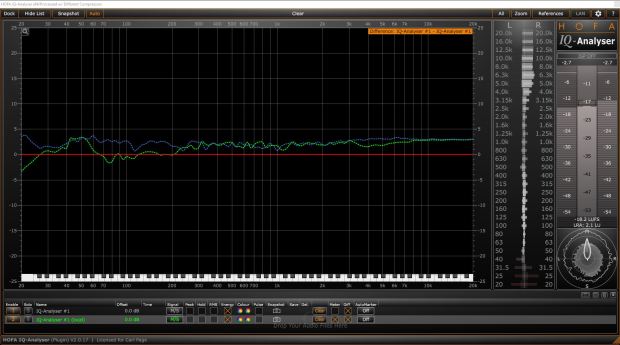
CA2A

CA2A (Classic Comp)

CA2A (Fast Limit)
Slather on a sleek layer of buttery frosting, or push hard into the cake for a spongy, dense dessert CA2A treat. It’s suave in an elegant, evident fashion. Sounds sweet at pretty much any setting on pretty much any source. Aurally aesthetic.
Recommended for: Bass buss.

CK-COMP

CK.COMP
ck.comp is mono only. Boastfully brazen. Can be used to add a tube-like tight distortion to the low end. Has “swagger”. You gonna mess with me? Yeah? You gonna?? A loyal workbeast.
Recommended for: Beefing up wimpy mono material.

CS CLASSIC COMP

CS CLASSIC COMP
IK Multimedia’s Classic Comp adds consistency to hits, seeming to smoothe out dynamics more than modifying groove. Pushed hard it has a tube-like distortion.
Recommended for: Taming errant peaks from an unpredictable performance.
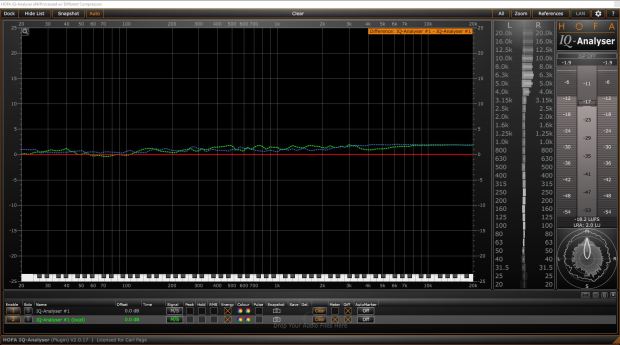
CS OPTO COMP

CS OPTO COMP
IK’s Opto Comp unobtrusively “puffs up”, adding perceptibility while retaining original dynamics and tone. Mostly uncolored; adding clarity to the top end. If pushed past a certain point it rapidly gains a chalky sort of character.
Recommended for: Light enhancement of an orchestral mix.

DANCING BOY
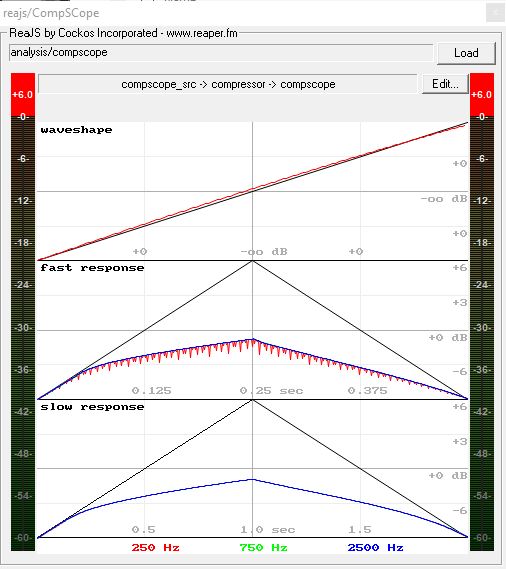
DANCING BOY
Edgy and sleek, can be pushed quite hard without turning to mush, retaining distinction between individual hits. To my ears it’s somewhere between the clinicality of a VCA and the anger of an FET.
Recommended for: Electronic drums, perhaps?

DC1A2

DC1A2
Seems “stretchy” or “rubbery” (in a good way). Sounds nice throughout entire range, at subtle amounts adding a touch of punch, at moderate amounts significantly increasing both attack and sustain (seemingly paradoxically) and at extremes showcasing its adaptability with enhanced transients and swelling release.
Recommended for: Hip hop / spoken word vocals.

DCAM

DCAM
DCAM boosts sustain with minimal sucking out of attack. Seems to really enjoy the snare, particularly accentuating the atonal (noise) portion of it. Prioritizes on distortion over ducking, so pushing it extremely hard seems generally ill-advised.
Recommended for: Snare drum, noise samples.

DDC

DDC
“Digital drum comp” is hyper-sensitive to transients, causing hits which tickle the edge of the threshold to jump out. Could possibly be useful, if dialed in carefully, for highlighting certain individual drum hits within a drum group to enhance groove.
Recommended for: Experimental percussion sound design, maybe. Or something.

DIGI DUAL-TUBE
DIGI Dual-tube is overall quite a clean compressor. Light to moderate amounts add subtle boost; high intensity enhances the initial transient a bit and nonlinearizes the sustain, seeming to swell up and then back down again.
Recommended for: Exotic plucked instrument.

DIRT SQUEEZE

DIRT SQUEEZE
The moniker does not lie. It squeezes and adds dirt. Even small amounts add perceptible coloration. Light application tends to enhance transients a bit, but once it goes moderate and beyond it primarily squishes.
Recommended for: An individual element which is buried in a mix and needs help standing out.

DO U WANNA COMP?

DO U WANNA COMP?
“Do U Wanna Comp?” is quite a clean compressor, and mostly invisible at low to mid amounts. When you push it real good, the decay tail is focused on the earlier part of the sustain rather than the later release, tapering off smoothly.
Recommended for: Distorted electric guitar.

DVC2

DVC2
It has a straightforward sound. As the name implies, it’s digital and fairly versatile. It compresses.
Recommended for: Pure clinicality when characterful groove or saturation is not desired.

DYNAMIC SPECTRUM MAPPER V2

DYNAMIC SPECTRUM MAPPER V2
DSM2 can be used to contour-match one audio source to another using multiband compression with extended resolution in the upper frequency range. Pristine, luscious, next-level processing. The audio example is contour-matched to itself, so it’s a bit odd, retaining frequencies other compressors would squish more and vice-versa.
Recommended for: Flexible Auto-Dynamic Tone Contouring

EXPRESS BUS

EXPRESS BUS (FEEDBACK, RMS, SLOW KNEE)

EXPRESS BUS (FEEDFORWARD, PEAK, HARD KNEE)
The Express Bus Compressor has a fairly complex response which tends to “puff” the initial attack of transients and “float” sustain, allowing heavy compression with minimal distortion. Its internal sensitivity begs careful setting of the threshold, however.
Recommended for: Acoustic instrument group.

EZCOMPRESSOR

EZCOMPRESSOR
Has a knocky, wooden sound. Can be pushed darn hard while still retaining consistent solidity of transients, without distorting. Apparently it is no longer publicly available, but it makes me suspect that ToneBoosters’ other dynamics processors are swell as well.
Recommended for: Improvised household percussion.
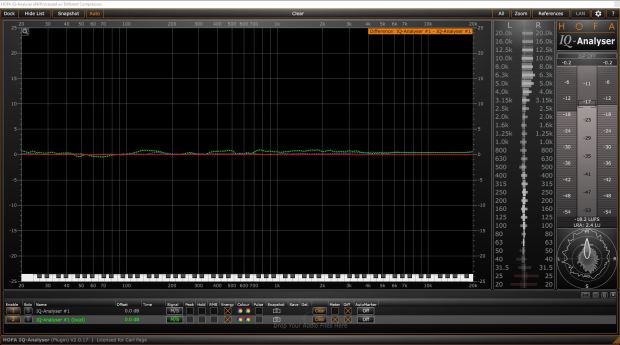
FAIRLYCHILDISH2

FAIRLYCHILDISH2
Pumps more than distorts. When pushed hard, transients “pop”, early sustain is hollowed out and release tails swell. A little touchy and the threshold must be dialed in carefully to find the sweet spot.
Recommended for: Acoustic piano.

FETISH

FETISH

FETISH (INTERSTAGE HIDDEN OPTION ENABLED)
Juicy, metallic, thick. Fetish (get it? FET ish?) slams hard while maintaining silk. Crush the funk out of junk without breaking apart. Bust out the whipped cream.
Recommended for: Drums, percussion.

FR-COMP 87

CM-COMP 87
FR-Comp 87 and CM-Comp 87 are based on the same engine, but the CM version has more controls. A longtime favorite compressor. Smacks like getting slapped silly by an interplanetary water fowl’s honey-dipped flipper.
Recommended for: Stratocaster-style electric guitar.

GLUE

GLUE
Light to moderate amounts of the glue add density, but like many buss compressors when pushed to a certain point will start to poke up transient attack. Massages sound with refinement, but can become a bit distorted when attacking fast with a deep threshold. Whatever you do, don’t sniff it.
Recommended for: Assorted groups and crafts.

HBC2

HBC2 is delectably clean, smooth, and tight. Solid responsiveness for consistently steady dynamic groove even when pushed hard. Imparts a sense of firm, gentle authority. It’s a new favorite compressor, but i haven’t heard anyone else rave about it yet. Maybe it’s so perfect it’s boring?
Recommended for: Guitars buss.

H-COMP (DIGITAL)

H-COMP (ANALOG 1)

H-COMP (ANALOG 2)

H-COMP (ANALOG 3)

H-COMP (ANALOG 4)

H-COMP (DIGITAL)

H-COMP (ANALOG 1)

H-COMP (ANALOG 2)

H-COMP (ANALOG 3)

H-COMP (ANALOG 4)
H-Comp is basically 5 compressors in one and has some interesting features, like release based on host BPM and transient punch re-injection. It also doesn’t tell you that it has automatic makeup gain. The limiter seems to always be engaged, even when shown switched off. Finding the threshold sweet spot can be touchy with slow release.
Recommended for: Precise rhythmic control of drum dynamics.

HORNETFATFET

HORNETFATFET
The FatFet is groovy & swing-enhancing, imparting a nice sense of aggressive weight, but breaks apart a bit when pushed to the extreme. Edge it back for the right amount of growl.
Recommended for: Lead synth.

JSCOMPSHAPER

JSCOMPSHAPER
jsCompShaper seems to excel in the moderate range, where it adds a bit of meaty color. Light amounts behave like a fairly typical compressor, while at the extreme range it completely obliterates with deliberate distortion.
Recommended for: Heavy saturating color.

KOTELNIKOV GE

KOTELNIKOV GE

KOTENLIKOV GE (INTERTIA MODE)

KOTELNIKOV GE (INVERSE INERTIA MODE)
Kotelnikov gives delicate precision; at the light to moderate range it’s of unparalleled transparency and adaptability. “Inertia” and “inverse inertia” modes, tasteful harmonic saturation and adjustable dual-series frequency-dependent release allows for increased refinement.
Recommended for: High-fidelity mastering.

MAX COMPRESSOR

MAX COMPRESSOR
Lots of options make it very versatile. Can dial in a balance between pumpiness and distortionality. Pushing hard can break it apart pretty bad.
Recommended for: When you don’t know which other compressor to use.

MCOMPRESSOR

MCOMPRESSOR
Extreme versatility and customizability allow for fine-tuning your own dynamics curve, as tight or as loose as you want. It can be pushed to be insanely brutal, or used with delicate, subtle refinement.
Recommended for: Individual orchestral instrument.

MJUCjr

MJUC Mk1

MJUC Mk2

MJUC Mk3

MJUCjr

MJUC
Each model of MJUC has its own unique character. What they do share is a rich massaging of dynamics which, when pushed, blossoms with analog complexity.
Recommended for: Orchestral or vocal busses.

MOLOT

MOLOT
Strident and vibey with unique attack and release responsiveness, retaining low end. Wade in the swamp for a while and let yourself get soaked with smelly murk. It’s ok if it stains your pants a little.
Recommended for: Flamenco acoustic guitar.

THE MONSTER

THE MONSTER
It really smacks hard, while retaining metallic bite. If you want to smash the shit out of something without it dissolving into distortion, this is your ticket to monsterville. Not subtle. Rawr.
Recommended for: Boom bappin’ beats.

NP1136

NP1136
At light to moderate amounts, NP1136 adds clarity to transients, while setting it deeper results in pure peak limiting. it’s mostly digital sounding but has a touch of roundedness.
Recommended for: Chiptune synths.

P&M ELECTRO OPTICAL

P&M ELECTRO-OPTICAL
For some reason Plug&Mix’s Electro Optical Compressor reminds me of bread. Moderate amounts infuse the dough with active yeast puffing it up. Pushing hard bakes the crust.
Recommended for: Backing vocals, female.

P&M RETRO COMPRESSOR

P&M RETRO COMPRESSOR
Chunky and dusky at lower intensities. When pushed hard, adds a tubey cutting bite.
Recommended for: Backing vocals, male.

PRESSIT
Useful for adding density or curtailing peaks without affecting the entire frequency range, very clean until pushed too hard when it distorts with a plastic harshness. Can be used clinically sorta like a de-esser.
Recommended for: Poorly recorded plucked instruments.

PRESSURE4

PRESSURE4
Airwindows’ creation Pressure4 has an interesting response curve. It progressively adds grainy heft. Small amounts add a little bit of magic but it can get pretty ugly if smashed.
Recommended for: Adding density to an auxiliary channel.

PUIGCHILD 670

PUIGCHILD 660
The Puigchild is one of the few compressors i demo’d and said “i need to own that”. I did grab it eventually on a sale. It adds a distinct high-frequency lift so is useful if like me you tend to mix overly dark. But the main thing about it is the sophisticated, suave dynamic movement. It just fucking sounds good.
Recommended for: Instruments buss (non-bass).

PYEWACKET

PYEWACKET
Now this is an interesting device. At moderate degrees it inflates sustain, leading to a fuller sound. But when pushed further, it begins to reduce sustain and add definition to individual notes with a squelchy sort of pleasant clipping.
Recommended for: Fingerpicked acoustic guitar.

REACOMP

REACOMP
Another versatile “swiss army knife”, Reacomp to me excels at medium to slower attack or release settings, due to its gradual curvature. At faster settings it can blister and peel.
Recommended for: Atmospheric pads.
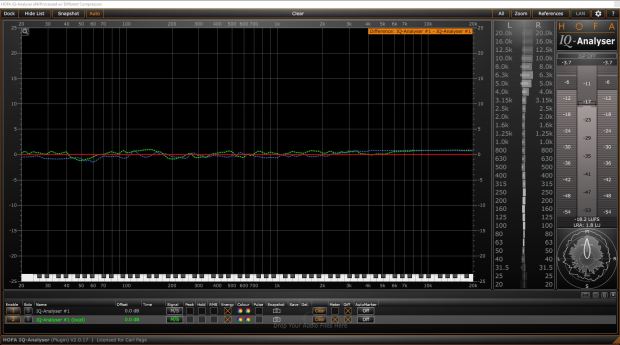
REAXCOMP

REAXCOMP
Does a good job at pulsing with the beat, juicing up individual hits. Sculpt to your heart’s content with any number of frequency bands to be able to tuck in or bring out specific elements.
Recommended for: Drum buss.

REEL ADT
Not technically billed as “a compressor”, nonetheless this tape machine does compress material going through it. Quite nice compression, in fact.
Recommended for: Lead vocals.
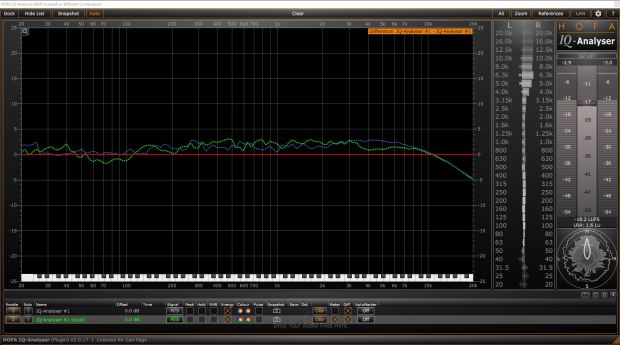
ROUGHRIDER
Unlike many compressors it tends to quell the very first hit more, rather than less, than subsequent ones. Add thick burliness to things with a softened nose.
Recommended for: Drum overheads.

SAFE COMPRESSOR

SAFE COMPRESSOR
Pumpy, Semantic Audio’s compressor model will cause “thwop” before grinding out into grit. It thumps nicely but can struggle to recover naturally without setting the timings carefully.
Recommended for: Sampled audio?

SDC (OPTICAL + DISCRETE)

SDC (OPTICAL)

SDC (DISCRETE)

SDC (OPTICAL + DISCRETE)

SDC (OPTICAL)

SDC (DISCRETE)
It’s based on probably the most famous mastering compressor of all-time and it shows. Dig those frequency nonlinearities. Tasty snap. Refined girth.
Recommended for: Characterful mastering
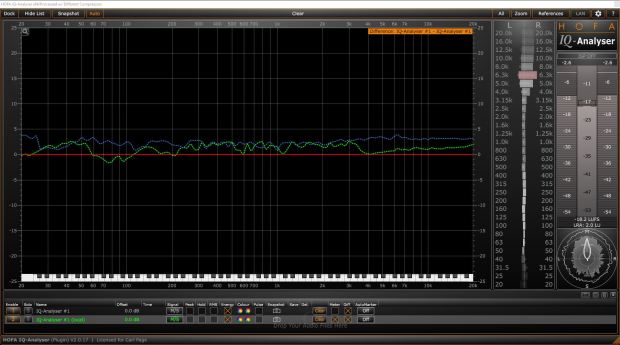
SLAX

SLAX
Has extremely smooth decay. Interesting, vibey, clean optical compressor. Pushing it moderately adds bite; pushing it harder mellows it back out again, leading to natural-sounding nonlinear dynamics control.
Recommended for: Ambient soundscapes.

STILLWELL 1175

STILLWELL 1175
Light application results in refined touch of increased definition, but pushed too hard it can get glassy and washy.
Recommended for: Mallet instrument.

SUNRAYS CM

SUNRAYS CM (CLASSIC)

SUNRUYS CM (SOFT)
Sunruys seems to emphasize the midrange with a nice forward solidity. The response curvature helps bring confidence to hesitant material. Dirt and grime will ooze out if you squeeze it hard enough.
Recommended for: Electric guitars buss.

SUPERCHARGER

SUPERCHARGER
Supercharger blends distortion and pumping for a balanced mixture. At moderate amounts it clamps down aggressively and when pushed further it lets transients pop back out and pumps more. It has a creamy flavor but keeps things firmly under control. This is starting to sound way too sexual.
Recommended for: Bass synth.

SURGE

SURGE

SURGETIDE

SURGETIDE
These are really interesting, with response curves which go up then back down then up then down then back up… according to creator Chris Johnson affecting “the rate of the rate of the rate of change”. It’s intriguing for certain. Surge seems to be a refined version of SurgeTide with more consistent results baked in at the expense of some user flexibility.
Recommended for: Tom or hand drums.

TAN
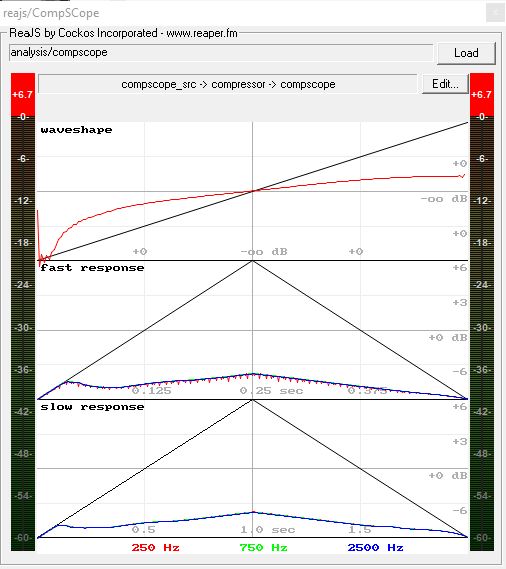
TAN
The sound of TAN reminds me of sand. It sounds beautiful even when pushed to extremes, never degrading in resolution. Subtle amounts are evident as an ammophilous tickle; increased intensity enforces thick, silken, edgy groove.
Recommended for: Shakers and miscellaneous percussion.

TCHAIN DIGITAL COMP

TCHAIN DIGITAL COMP
tChain’s included Digital Compressor is quite effective at shoving a little extra perceived loudness into your face, working on curtailing transients. Pushed too hard it crumples up pretty mushy.
Recommended for: Rhythm guitar.

TDR FEEDBACK COMPRESSOR

TDR FEEDBACK COMPRESSOR
Quite transparent throughout its range due to its dynamic release curve which allows fitting to variable material, with optional saturation for character.
Recommended for: Vintage organ.

TDR FEEDBACK COMPRESSOR 2

TDR FEEDBACK COMPRESSOR 2
Cultivated sound. The evolution of the TDR Feedback Compressor, with the saturation removed and stereo sidechain difference percentage added. Perfectly transparent leveling at moderate degrees, extremely tasty splash when pushed to extremes.
Recommended for: Modern vocals.

THUNDER
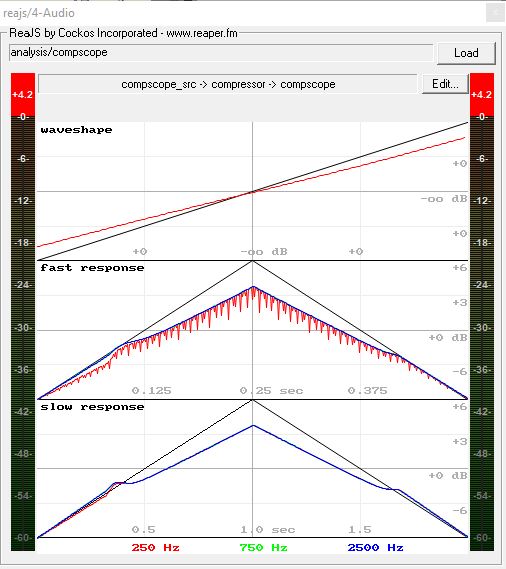
THUNDER
Dark & thumpy. At moderate amounts it adds a somber undersheen to the processed material. Pushed hard it seriously showcases flouncy thud on the lows and casts a cloudy blanket over the highs.
Recommended for: Kick drum.

TUBE PREAMP

TUBE PREAMP (LIMITER ON)

TUBE PREAMP

TUBE PREAMP (LIMITER ON)
Cheap analog tube preamp i have routed in mono which adds slight richness with a low-mid bump. It has a built-in limiter which is pretty tasty when pushed into. It’s not a compressor but i put it in here for contrast.
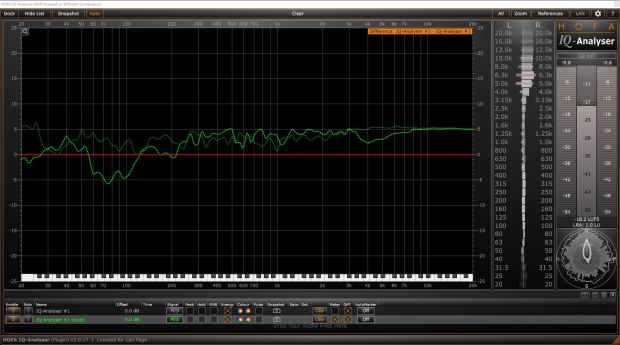
ULTRACHANNEL COMPRESSOR

ULTRACHANNEL COMPRESSOR
Ultrachannel’s built-in compressor has a modern attitude, adding powerful snap at moderate amounts, and can be pushed into biting obliteration. It can also be switched into a de-esser mode.

ULTRACHANNEL O-PRESSOR

ULTRACHANNEL O-PRESSOR
Ultrachannel’s secondary built-in compressor, this diminishes transient attack more for less snap, with more leveling-style vintage action with a rounded, soft, thick brawn.
The reaction curves of Ultrachannel’s two compressors complement each other well for serial placement. Both combined offer serious wallop.
Recommended for: Material with wide dynamic range.

VICE ONE CM

VICE ONE CM
Punchy & smacky with a penchant for enhancing groove. Natural and smooth, but edgy and forward as well. Pushing extra hard can land you in a realm of metallic scratchiness.
Recommended for: Drum loops.
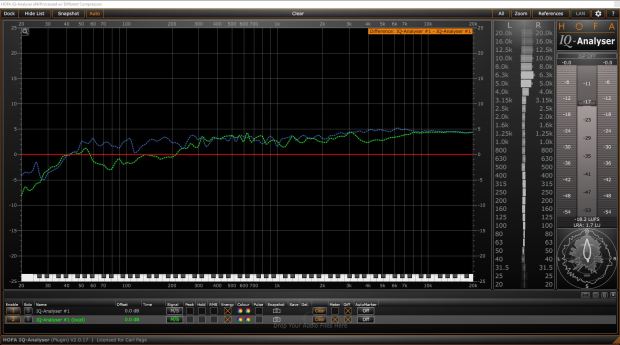
VITAMIN C

VITAMIN C
Vitamin C is the only “OTA” compressor plugin i know of. It has a sort of a swelling reaction which accentuates the groove of certain types of plucking. Dialing in the threshold and gain is quite odd with this plugin, but when it’s done the action is fun.
Recommended for: Banjo or steel-string guitar.

WTBC
The Warm Tube Buss Compressor gives, upon light application, unobtrusive leveling. When pushed a bit more, tubey grit starts to come in. Going all the way gives a convincing impression of an overdriven tube.
Recommended for: Exotic, lo-fi instrument.


Why is that TDR NOVA isn’t in the list? Is the compressor part of the plugin the same as Kotelnikov?
i avoided multiband compressors for this slew of tests. i suppose i could have run that one in fullrange mode, but i didn’t think about it. i have a handful of new compressors since this which i plan on doing a run of tests on at some point; when i do, i’ll include Nova and perhaps other multiband compressors too.
i don’t think the compressor part is the same as kotelnikov at all. To my ears, the compression nova is more rounded and smooth and a bit more crude (while still sounding pristine and being hugely surgical), while kotelnikov is clean as a whistle and a bit more refined in terms of attack and release behavior. I tend to use nova on the mix buss when composing/arranging to be able to flex stuff that pushes hard into it slightly, and i use kotelnikov ge for mastering (i find that using a mutliband dynamics processor for mastering is only necessary if the mixdown is really whack, in which case it’s usually better to just fix the mix).
Thanks for the fast answer dude, NOVA is my preffered multiband compressor all around (even though technically it’s a dynamic EQ) and knowing about some recommendations from someone that has tested so much compressors seems useful to me.
Tokyo Dawn Labs are my favorite plugin developer, hands-down
what’s also cool is that, literally as i’m responding to this, i’m tweaking parameters on nova ge on a mix. Ha!
Even though it was released months ago I just discovered the Dead Duck Software Bundle a few days ago, and to my ears the compressor sounds really good:
http://deadducksoftware.blogspot.com.co/
Any opinions on it?
i did a quick analysis of it and find it to have a quite nice response character; the attack curvature different than the release leading to a “punchy” sound which i find more suitable for enhancing groove than for for, say, leveling, and possibly useful for “aggressive” material. I’m thinking drums and maybe electric guitar.
Will definitely add the deceased waterfowl when i eventually update this article.
It’s interesting how even a simple “bread-and-butter” plugin can still have its own completely unique sound and be another useful addition to the toolshed. I guess that’s why my dad had so many tools in his actual shed.
Incidentally, dead duck’s plugins always make me think of duck hunt the nintendo game. That damn snickering dog.
I know that feel, we all suffered because of that dog.